Electroluminescence and hyperphosphorescence from stable blue Ir(III) carbene complexes with suppressed efficiency roll-off
Published in Chemistry
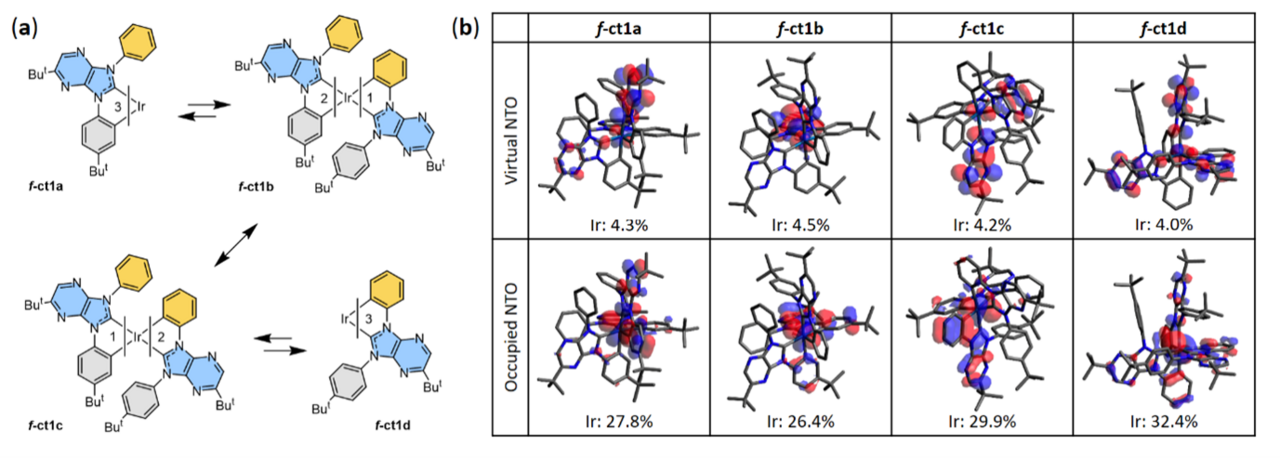
Performances of organic light-emitting diodes (OLEDs) have been steadily improved in terms of efficiency and longevity over the past two-to-three decades. However, deep-blue emitters with adequate durability and respective OLED devices with long enough lifespan still do not meet the industrial standard and present a grand challenge to future developments. Ir(III) complexes are particularly noted for their excellent photophysical properties, while there have been significant advancements in the use of them in fabrication of both the green and red emissive OLEDs, further research and development are needed to overcome the current challenges in blue emissive OLEDs and to realize their full potentials.
Prof. Chi and his associates at City University of Hong Kong have engaged in the development of transition-metal based phosphors for years. In the field of near-infrared (NIR) emitters, they have delivered a series of highly emissive Osmium(II) and Platinum(II) complexes, which set up many records showing emission peak wavelengths in the region of 740 – 1100 nm. (Adv. Funct. Mater. 2021, 31, 2102787; Nat. Photonics. 2017, 11, 63–68; Nat. Photonics. 2020, 14, 570–577; Nat. Photonics. 2022, 16, 843–850). Moreover, they also have made great impacts and progresses in the emissive Iridium(III) complexes, especially for efficient blue phosphors. (Adv. Mater. 2017, 29, 1702464; Adv. Sci. 2018, 5, 1800846; Chem. Mater. 2019, 31, 6453–6464; Adv. Sci. 2022, 9, 2201150; Adv. Mater. 2024, 36, 2305273). In their recent paper published in Nature Communications, four new Ir(III) carbene complexes (Fig. 1) with efficient blue emission were strategically synthesized and investigated in detail.
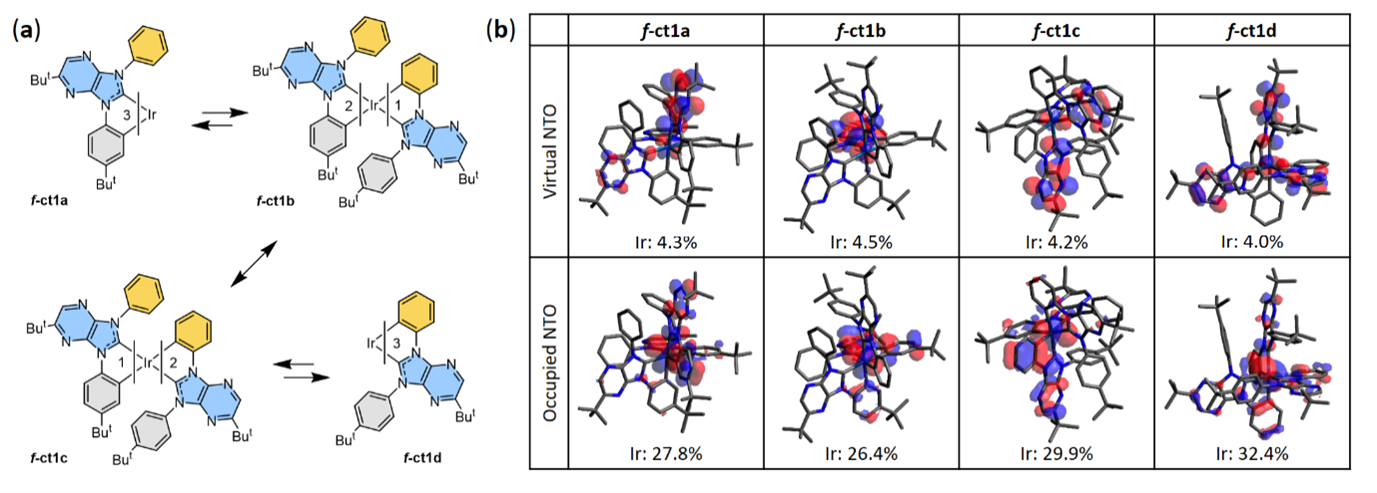
Fig. 1: Molecular structures and electronic orbitals of the studied Ir(III) complexes. a Schematic drawing of molecules. b virtual and occupied natural transition orbitals (NTOs) showing the electron distribution of the lowest triplet (T1) excited states; the contribution of Ir(III) metal to the NTOs is provided.
Accordingly, electron-deficient N-heterocyclic carbene (NHC) chelates and metal complexes were explored for improved performances and cost effectiveness. The current work was based on our previous observation published in Inorg. Chem. (Inorg. Chem. 2022, 61, 23, 8797–8805), in which the Ir(III) complexes with N-alkyl appendages possessed inferior stability during vacuum sublimation. To overcome this obstacle, Dr. Jie YAN decided to introduce two asymmetrical N-aryl pendants on carbenes to improve both the stability and OLED characteristics of the associated Ir(III) emitters at the same time. His work is motivated by the excellent performance of its precedent Ir(cb)3, which was first revealed in the BASF’s patents, but the work came to a halt because it cannot be isolated as pure material. After then, Dr. YAN was excited to observe the catalytic formation of all four expected facially arranged isomers in high yields. In addition, these Ir(III) carbene complexes underwent efficient equilibration in presence of both sodium acetate and p-toluene sulfonic acid without notable decomposition in high boiling point solvent. Furthermore, they can be separated by routine chromatographic techniques, paving the way to isolate each of them in scale-up quantity. Single crystal X-ray diffraction analyses on f-ct1a ‒ d were executed for full structural verification. As expected, they possess quasi-octahedral structures with facially arranged carbene chelates. Their thermal stability, photophysical and electronic properties of these four Ir(III) complexes are very suitable for making blue emissive OLED devices..
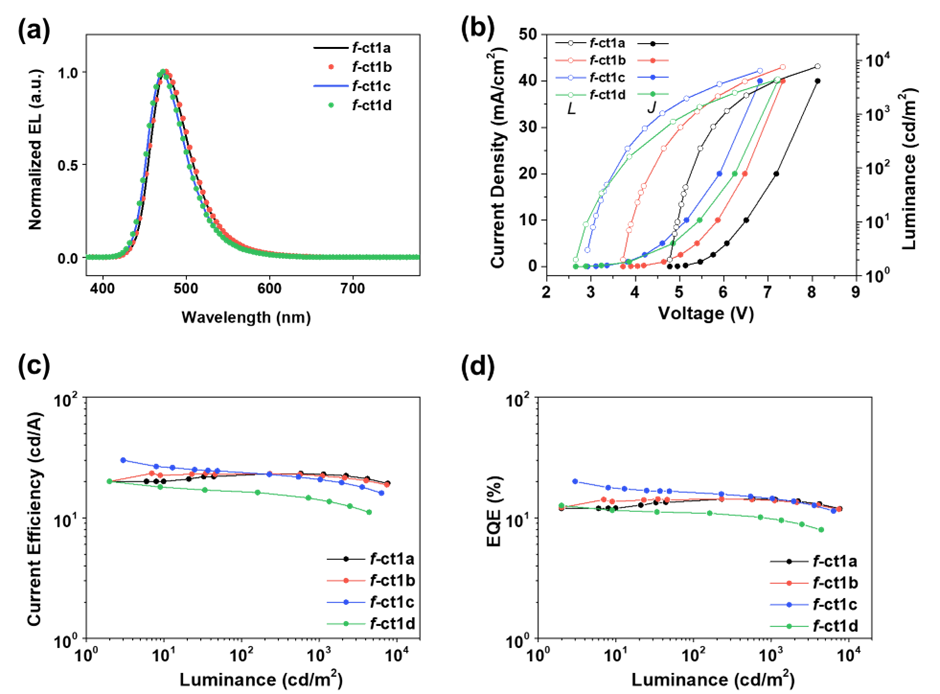
Fig. 2: Characteristics of the OLEDs using phosphors f-ct1a ‒ d. a Electroluminescence spectra. B current density-voltage-luminance (J-V-L) characteristics. C current efficiency-luminance characteristics. D EQE-luminance characteristics of devices using f-ct1a ‒ d at a doping concentration of 21 wt%.
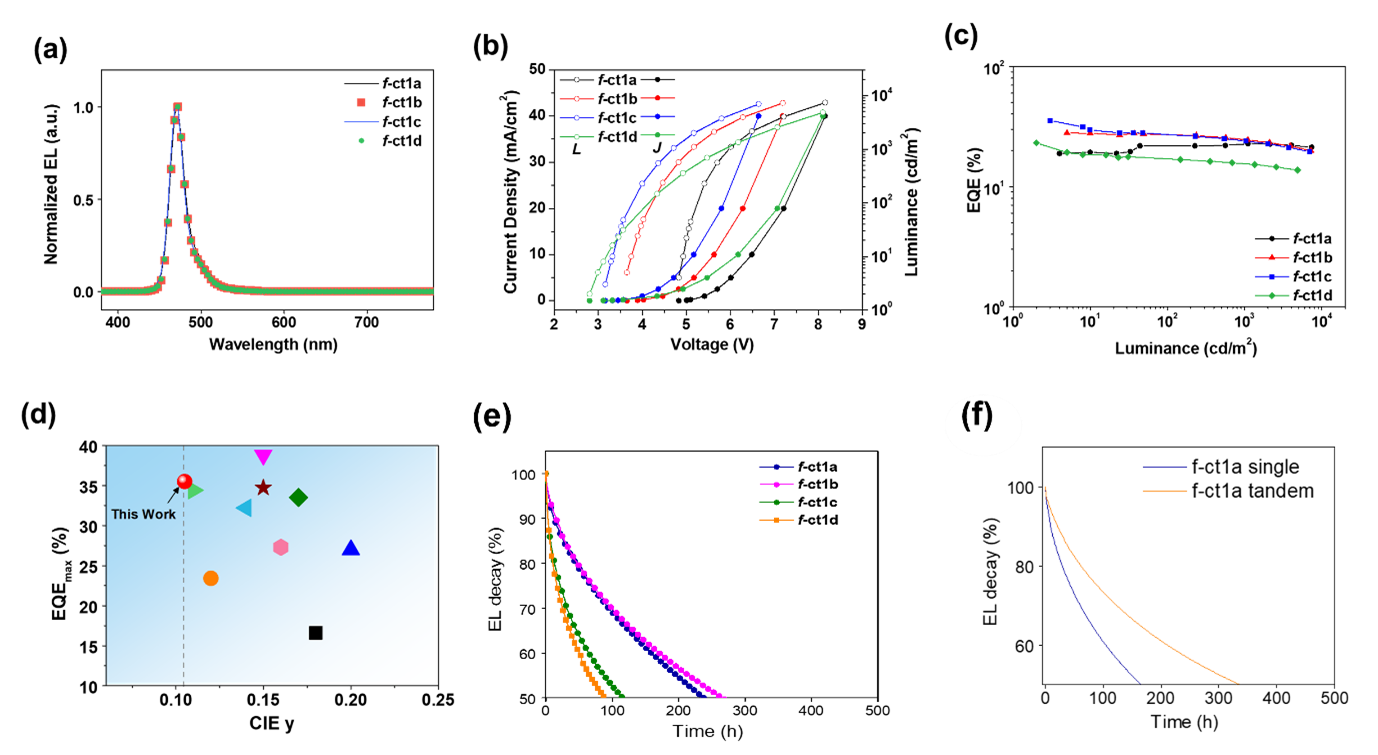
Fig. 3: Performances of hyper-OLEDs and operational stabilities. A Electroluminescence spectra. B current density-voltage-luminance (J-V-L) characteristics. C EQE-luminance characteristics of hyperphosphorescent devices using 21 wt% of sensitizers f-ct1a ‒ d. d EQE-CIEy relationship of ν-DABNA-based hyper-OLEDs documented in literature. E Luminance vs. operational lifetime of phosphorescent devices using 21 wt% of emitters f-ct1a ‒ d with L0 = 500 cd m−2. F Normalized luminance as a function of operational time of single and tandem devices using 21 wt% of f-ct1a with L0 = 500 cd m−2.
For the track records, the OLED device based on f-ct1c showed a peak maximum at 472 nm and a maximum external quantum efficiency (EQE) of 20.0% (Fig. 2), and the resulting hyper-OLED exhibited narrowband true-blue hyperphosphorescence with an EQEmax of 35.5% and, extraordinarily, retention of high EQE of 20.3% at 5000 cd m‒2 (Fig. 3). Finally, we anticipate that this work will draw further attention from both academic and industrial scientists, in realizing the durable blue phosphorescent OLED devices.
The details of this work are available from Nature Communications. https://www.nature.com/articles/s41467-023-42090-z
Follow the Topic
-
Nature Communications

An open access, multidisciplinary journal dedicated to publishing high-quality research in all areas of the biological, health, physical, chemical and Earth sciences.
Related Collections
With Collections, you can get published faster and increase your visibility.
Women's Health
Publishing Model: Hybrid
Deadline: Ongoing
Advances in neurodegenerative diseases
Publishing Model: Hybrid
Deadline: Dec 24, 2025


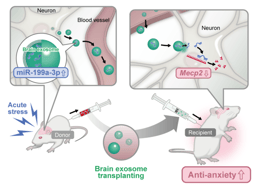
Please sign in or register for FREE
If you are a registered user on Research Communities by Springer Nature, please sign in
Good work! Congratulations!